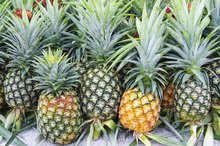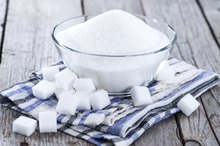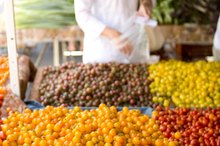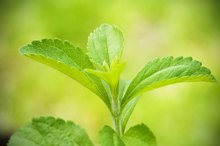What does fact checked mean?
At Healthfully, we strive to deliver objective content that is accurate and up-to-date. Our team periodically reviews articles in order to ensure content quality. The sources cited below consist of evidence from peer-reviewed journals, prominent medical organizations, academic associations, and government data.
- National Center for Biotechnical Information: Fructose Intolerance
- National Center for Biotechnical Information: Fructose Intolerance
The information contained on this site is for informational purposes only, and should not be used as a substitute for the advice of a professional health care provider. Please check with the appropriate physician regarding health questions and concerns. Although we strive to deliver accurate and up-to-date information, no guarantee to that effect is made.
Fructose-Free Diet
Following a fructose-free diet excludes any food or beverage containing the sugar fructose, as well as any sugar that converts to fructose. Table sugar, high fructose corn syrup, glucose and the sugar substitute sorbitol are included on the list. Understanding the rationale behind the diet and becoming knowledgeable about dietary precautions are vital when adopting a fructose-free eating style.
Rationale
A fructose-free diet is generally prescribed for individuals who have one of two types of fructose intolerance. Hereditary fructose intolerance (HFI) is a rare genetic disorder involving the absence of the gastrointestinal enzyme aldolase B, which breaks down fructose for absorption into the bloodstream. A buildup of fructose in the blood damages the kidneys and liver. Fructose malabsorption is the second type of intolerance 1. Although less serious, it produces uncomfortable gastrointestinal symptoms such as gas, bloating and diarrhea. Both conditions require diagnosis by a physician. Dr. Luc Tappy at the University of Lausanne in Switzerland says “no direct evidence for more serious metabolic consequences” exists for healthy individuals who wish to avoid fructose.
- A fructose-free diet is generally prescribed for individuals who have one of two types of fructose intolerance.
Natural Sources
Stevia & the Atkins Diet
Learn More
Fructose is a simple sugar found naturally in fruit. Because fruit is the primary source, all fruits, juices, extracts and dehydrated fruits are avoided. Some vegetables have a high natural fructose content. This includes carrots, tomatoes, corn, newly harvested white potatoes and sweet potatoes. According to the Hereditary Fructose Intolerance Laboratory at Boston University, cooking vegetables releases free fructose and may help improve tolerance in some individuals.
- Fructose is a simple sugar found naturally in fruit.
- Because fruit is the primary source, all fruits, juices, extracts and dehydrated fruits are avoided.
Processed Foods
Numerous manufactured foods utilize fructose, table sugar and sorbitol as additives. Fifty percent of table sugar, or sucrose, is fructose. When choosing a processed food item, read labels carefully. Fructose hides under other names such as:
- beet sugar
- brown rice syrup
- baker’s sugar
- date sugar
- carob powder
- cane sugar
More detailed information is available online (see Resources below).
- Numerous manufactured foods utilize fructose, table sugar and sorbitol as additives.
Menu Suggestions
Foods High in Glycolic Acid
Learn More
Most protein foods are permissible. Calcium-rich milk, cheese and natural yogurts provide variety when menu planning. A limited number of vegetables are permitted, which include:
- asparagus
- cauliflower
- spinach
- rutabagas
- peppers
- lettuce
Pasta, rice, barley, and unsweetened breads and cereals are fine starch choices. All fats such as butter, margarine and oil are allowed. Salad dressing should be made from scratch because many commercial dressings contain sugar. Additional lists of allowable food items, recipes and discussion blogs are available online (see Resources below).
- Most protein foods are permissible.
- All fats such as butter, margarine and oil are allowed.
Considerations
Individuals following a fructose-free eating plan should be aware the diet is limited in vitamin C and antioxidants. In addition, nutritional supplements may contain sugar and sorbitol. Consultation with a physician and registered dietitian is highly recommended.
Related Articles
References
- Journal of the American Dietetic Association; "Fructose malabsorption and symptoms"; Susan Shepherd and Dr. Peter Gibson; October 2006
- Physiological Review (journal); "Metabolic effects of fructose and worldwide obesity"; Dr. Luc Tappy et al; January 2010
- Popkin BM, Hawkes C. Sweetening of the global diet, particularly beverages: patterns, trends, and policy responses. Lancet Diabetes Endocrinol. 2015;4(2):174-186. doi:10.1016/S2213-8587(15)00419-2
- New Hampshire Department of Health and Human Services. How much sugar do you eat?. Updated August 2014.
- DeSilver D. How America's diet has changed over time. Pew Research Center. Updated December 13, 2016.
- Lakhan SE, Kirchgessner A. The emerging role of dietary fructose in obesity and cognitive decline. Nutr J. 2013;12:114. doi:10.1186/1475-2891-12-114
- Djiogue S, Nwabo Kamdje AH, Vecchio L, et al. Insulin resistance and cancer: the role of insulin and IGFs. Endocr Relat Cancer. 2013;20(1):R1-R17. doi:10.1530/ERC-12-0324
- Page KA, Chan O, Arora J, et al. Effects of fructose vs glucose on regional cerebral blood flow in brain regions involved with appetite and reward pathways. JAMA. 2013;309(1):63-70. doi:10.1001/jama.2012.116975
- Goran MI, Ulijaszek SJ, Ventura EE. High fructose corn syrup and diabetes prevalence: a global perspective. Glob Public Health. 2013;8(1):55-64. doi:10.1080/17441692.2012.736257
- Walker RW, Dumke KA, Goran MI. Fructose content in popular beverages made with and without high-fructose corn syrup. Nutrition. 2014;30(7-8):928-35. doi:10.1016/j.nut.2014.04.003
- American Heart Association. Added sugars. Updated April 17, 2018.
Resources
Writer Bio
Based in Northwestern Pennsylvania, registered dietitian Michele Frndak has educated the public about food and human behavior since 1981. A nutrition coach and community food advocate, Frndak holds a Master of Science degree in human nutrition from the University of Alabama. Her online articles reflect a passion for well-being through nutritional health.









